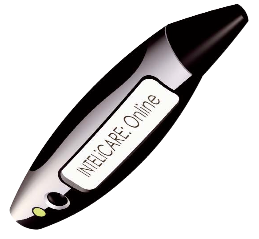PROJECT BRIEF
When: 2003-2004 (finalized)
What: Intel’s Proactive Health project is seeking creative technology designs and demonstration prototypes in two primary areas: social health monitoring and support (SHMS) and daily routine monitoring and management (DRMM).
Documentation:
- Project Brief: PDF | 0.4 MB
PROJECT SUMMARY

The current goal of Intel’s Proactive Health project is to explore, demonstrate and test a variety of home health technologies aimed at prolonging elders’ independence and enhancing their quality of life. The initial focus of the Proactive Health project is on addressing the needs of elders coping with various stages of cognitive decline. Social researchers working on the Intel Proactive Health project have conducted extensive ethnographic studies of elder households with the goal of developing a deep understanding of the everyday lives of elders and their caregivers. An important design requirement that emerged from those studies was the need to design and develop novel technologies that can be embedded into the everyday routines and household devices used by elders. Engineers working on the Proactive Health project are currently prototyping a number of sensing technologies based on Intel platforms and infrastructure.
Intel’s Proactive Health project is seeking creative technology designs and demonstration prototypes in two primary areas: social health monitoring and support (SHMS) and daily routine monitoring and management (DRMM).
Social Health Monitoring and Support (SHMS)
Social Health Monitoring and Support focuses on detecting, monitoring and facilitating social interaction between elders and other people-what Intel’s Proactive Health team refers to as “social connectedness.” A key technical challenge in this area involves detection of elder interaction (in person, on the phone, or via some other communication technology). Technology solutions that enable SHMS should be designed and developed with the goal of addressing questions such as:
- What are some ways of enabling a remote caregiver to detect when an elder is interacting with another person?
- What channel of communication is being used during a particular elder interaction (i.e. face-to-face, telephone, etc.)?
- How long did the interaction last?
- What was the interaction about?
- How can certain changes in elder speech patterns be detected that might signal cognitive decline or other problems?
- What are some non-intrusive ways of providing elders with feedback about their level of social connectedness (e.g. through the use of ambient displays)?
One technology approach might involve the use of mote-based wearable sensors that detect certain conversational properties. Imagine for instance a pendant worn by an elder that records the number of minutes he or she spends talking. Another approach might be a brooch worn by an elder that measures the number of gaps between his or her words. Output from such devices could be sent to an application running on a PC that generates certain conversational statistics. These statistics could, in turn, be used to provide a measure of an elder’s social health as well as longer-term changes in speech fluency.
Daily Routine Monitoring and Management (DRMM)
The focus of Daily Routing Monitoring and Management is on monitoring elders’ daily routines and assisting them with their routines on an as-needed basis. Technologies designed for DRMM should address questions such as:
- What are some ways of detecting whether an elder followed or departed from his or her morning ritual?
- What are some means for detecting whether an elder is having a “good” day or a “bad” day?
- What are some ways of sensing when a remote caregiver needs to be alerted?
- What are some ways of distinguishing between urgent and non-urgent information about the elder?
- What are some non-intrusive ways in which non-urgent information about an elder’s day can be shared with a remote caregiver?
- What kinds of informational displays are more appropriate for use in an elder’s home?
- What are some ways of helping an elder get started on their routine or pick up where they left off if they’ve lost their way?
Technology solutions might employ mote-based technologies that place low demands on an elder’s attention and involve minimal learning (e.g. via use of ambient displays). Imagine, for example, a kinetic sculpture that provides an elder with information about how far he or she is from achieving his or her daily exercise goal. Alternatively, imagine a technology that might help the elder detect emergent opportunities to take a walk with a friend. Technologies designed and developed for DRMM should focus on intuitive, unconventional indicators and employ technologies that can be embedded in tangible objects versus technologies that use LEDs and traditional monitor-based displays.
The results
The result presented in May was the system with the two included devices that has been successfully given the properties that the project group aimed for. A few new creative functions have emerged that aim to fulfil and further exceed the user’s expectations.
Looking back on this project, having used this product development methodology in a distributed collaboration with Stanford University and the Royal Institute of Technology, the INTELiCARE members feel they have been successful in creating new solutions that promote the wellbeing of elderly people.
The team




